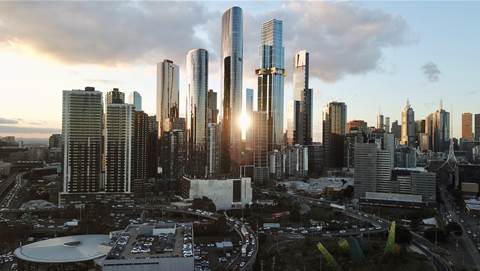NBN Co is unconvinced price is the main reason it struggles to attract “price-sensitive” users, instead believing its product range and “education” of the market may also be at fault.

The company last week kicked off a wholesale pricing review to collect “industry feedback and suggestions on how new wholesale pricing and discount constructs may be used to encourage greater take-up of NBN services by under-represented, price-sensitive segments of the market such as low-income earners and older Australians.”
However, the paper appears to contain no specific proposals on how to appeal to low-income users, while offering specific proposals such as a cut-price offer to move more users up to 100Mbps.
The obvious answer to appealing to market segments NBN Co itself says are “price-sensitive” is a well-priced offer.
A market segment defined as "price-sensitive" is surely prioritising price over other factors when making decisions on services they consume.
However, NBN Co appears unconvinced.
“We do not believe there is necessarily a one size fits all solution to under-represented customers or customers who may be more price-sensitive,” NBN Co general manager of commercial Ken Walliss said in an emailed statement to iTnews.
“There are a number of reasons impacting take-up of these consumer segments, and this may require new thinking from the industry and multi-faceted solutions around better education, new products and pricing.
“We believe the consultation process provides an important opportunity for the industry and special industry groups, like the Australian Communications Consumer Action Network (ACCAN), to collaborate and find solutions together, so no one gets left behind.”
NBN Co’s referencing of ACCAN, both in this latest statement as well as its review announcement last week, could indicate the network builder is ready to seriously entertain a proposal ACCAN floated back in February.
ACCAN wants NBN Co to create a new product construct specifically for households receiving government assistance, offering 50Mbps speeds for $20 wholesale and $30 retail.
This kind of proposal would tick two out of three boxes on the list of factors NBN Co believes keeps low-income users off its network.
That is, the ACCAN proposal requires both a new product construct as well as new pricing.
ACCAN CEO Teresa Corbin confirmed to iTnews that the proposal will be pushed via the NBN pricing review.
“We’ll be continuing to advocate for our No Australian Left Offline initiative in the NBN wholesale price review, as well as in discussions with the government and wider telco industry,” Corbin said.
“We believe that our plan for a 50Mbps product for $20 wholesale/$30 retail for households receiving income support is the best way to achieve affordable broadband for Australian households.
“We’ll continue to consult with our members and consumer groups as part of the wholesale pricing review consultation paper process to ensure that we are taking an inclusive approach to ensuring that NBN is affordable for all Australians.”
NBN Co would not be drawn on the extent of its readiness to give serious consideration and/or perform modelling on ACCAN's proposal.
“The consultation process has just started and we look forward to receiving the industry feedback,” an NBN Co spokesperson said.
“Unfortunately, we can’t comment beyond that.”
Affordability backdrop
The review comes against a backdrop of discontent over NBN “affordability”, exacerbated by NBN Co’s price and performance squeeze on users of its current cheapest plans.
The squeeze is now on hiatus until mid-2020, courtesy of a backdown last week, which is good news for customers on 12Mbps plans.
The most concerning vector of affordability criticism from an NBN Co standpoint is likely to be from the Australian Competition and Consumer Commission (ACCC).
ACCC chairman Rod Sims warned in April that NBN Co was losing sight of its reason for existence.
“The very purpose of building the NBN was to make broadband faster, and more accessible and affordable for all,” he said.
“We were never meant to get to a situation where some consumers, in switching to the NBN, will be left worse off by paying more, or getting less.”
At the time, Sims raised particular concerns that “the cost of NBN plans is becoming a growing affordability issue for people on lower incomes, with the plans now more expensive than what most consumers pay for equivalent ADSL plans.”
The ACCC has already suggested that NBN Co keep entry-level broadband prices at ADSL levels to create a baseline around affordability.
The government’s own Bureau of Communications Research (BCR) showed the enormous disparity in how telco bills affect low-income households in a 2017 paper, which cited 2015 numbers.
“In 2015, the bottom 10 percent of households by income spent almost 10 percent of their disposable income on communications services, compared with the top 10 percent of households, who spent approximately one percent of their disposable income,” it said.
“Economic modelling shows that the higher a household’s communication spending as a proportion of income ... the higher the likelihood that these households are experiencing financial stress,” the Australian Communications Consumer Action Network (ACCAN) said last year.
Even recently, however, NBN Co has been trying to reframe the discussion around affordability, and downplay concerns around how its products are priced.
In March, NBN Co commissioned research that claimed “Australia’s broadband affordability to be among the best in the world”.
Its research attempted to reframe the debate by asserting that “price is not the same as affordability".
“‘Price’ is a measure of what consumers pay for a service. ‘Affordability’ accounts for their capacity to pay,” the researchers said in a blog post on the NBN website.
The NBN-commissioned research claimed that “the median broadband price in Australia is equivalent to 1.4 percent of Australian per capita income”; that “broadband is relatively affordable in every speed tier”; and that “Australian broadband is affordable relative to other goods and services”.
The figures were clearly intended to counter the BCR numbers, which are considerably more granular and paint a much clearer - and considerably less rosy - picture of the impact of telecommunications costs on income.
NBN Co has a clear reason to downplay price and affordability; the company’s business model requires it to consistently extract more money from customers by growing its average revenue per user (ARPU) each year.
That is likely to explain why it has given specific thought to an expanded range of 100Mbps plans in its pricing review, while offering no concrete options geared towards the “under-represented, price-sensitive segments” of the market that the review is ostensibly designed to address.
It may also explain why a review has been called to canvas options, where options from the likes of the ACCC and ACCAN around affordability are already in the public domain.
One hopes a serious option is found and acted upon.


















.png&h=141&w=208&c=1&s=1)

